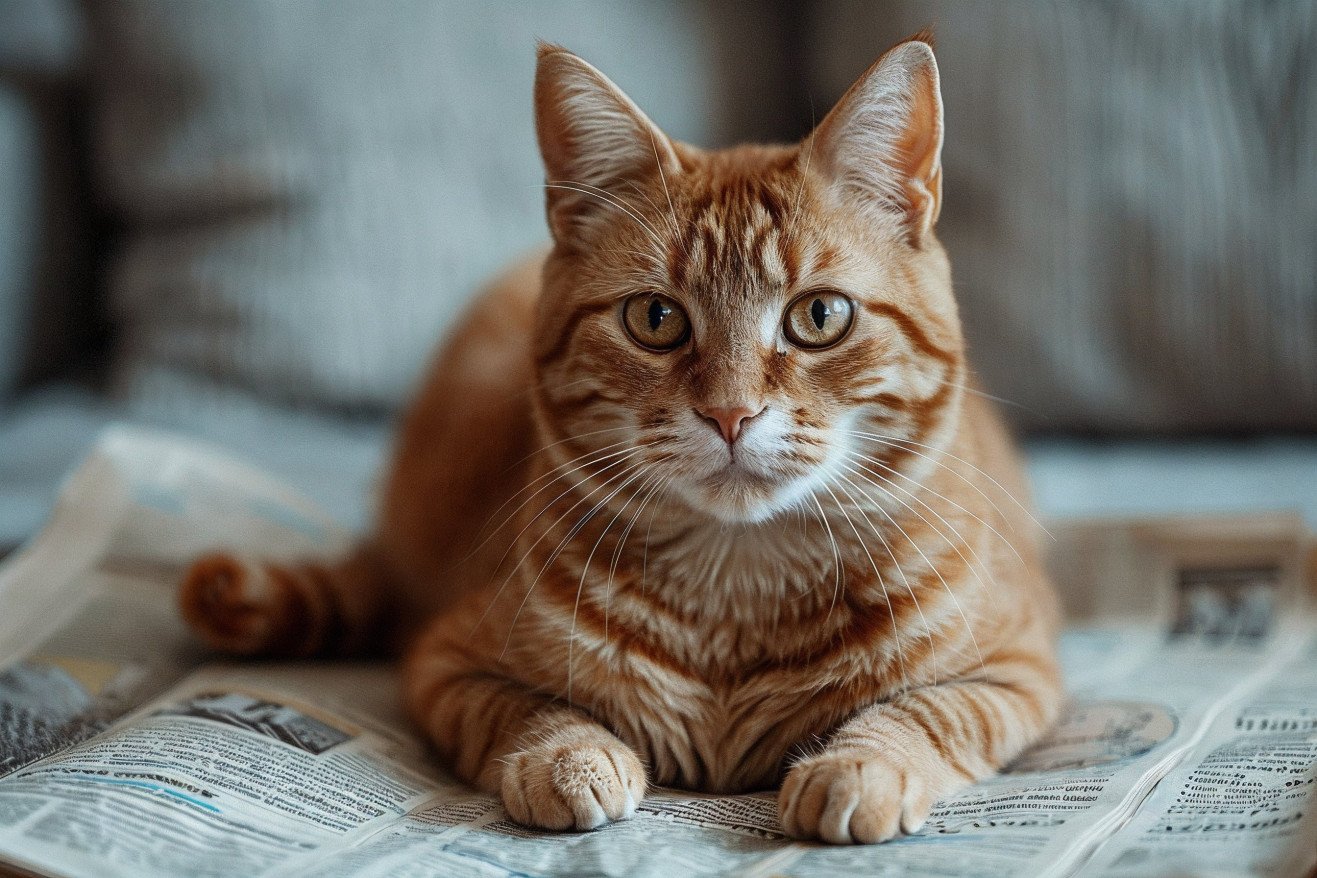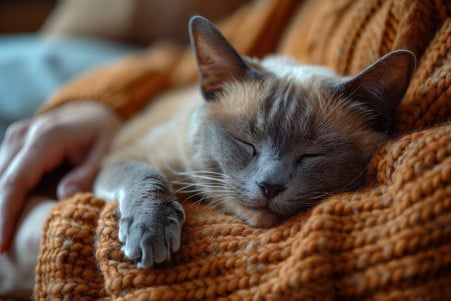Why Do Cats Like to Sit on Paper? The Science Behind the Strange Behavior
10 May 2024 • Updated 8 May 2024

If you've ever had a cat, you've probably noticed that they love to sit on paper. Whether it's a newspaper, a book, or just a piece of printer paper, if you put it down, your cat will come running. But why is that?
According to cat behaviorists, the answer is that cats are attracted to the smell of the paper and the way it feels and smells. This is because it reminds them of the way their ancestors would lay in the sun on warm surfaces.
In this article, we'll explore the ideas of animal behaviorists and cat experts to explain why cats like to sit on paper. By looking at everything from evolution to biology to the way cats experience the world, you'll come away with a better understanding of why your furry friend loves to snuggle up on a piece of paper.
Why do cats like to sit on paper?
Sensory Fascination: Exploring Cats' Attraction to Paper
Cats' preference for paper and cardboard can also be explained by the sensory experiences these materials provide. According to MaineCoon.org, the textures and sounds of paper and cardboard are similar to the surfaces wild cats would have sought out for lounging and sunbathing. Just as their ancestors would have enjoyed the feel and warmth of rocks or soil heated by the sun, cats today can enjoy the same experience with paper.
The sounds and textures of paper and cardboard also appeal to cats' predatory instincts. As Rover.com notes, cats are naturally attracted to anything that moves or makes noise in their environment, a trait that helped them survive and thrive as hunters and scavengers. The sounds and textures of paper and cardboard make it an appealing object to explore, scratch, and potentially shred.
In addition, cats are driven to mark objects with their scent, a behavior that's discussed in a study on pheromones that's cited by MaineCoon.org. When cats rub against paper, they're marking it with their scent to claim it as their own. This behavior is a holdover from their ancestors' need to mark and claim their hunting territory.
Sensory Experiences and Comfort Factors
The texture and crinkly nature of paper can be satisfying for cats on a sensory level, according to Cats.com. Paper also has insulating properties that can help cats maintain their body heat and keep warm, especially since their body temperature is higher than that of humans. Cats are also attracted to small, enclosed spaces like paper bags or boxes because they can feel safe and secure in them, according to Litter-Robot.
The scent of their owner on paper or cardboard can be comforting and appealing to cats, who have a sense of smell that's far more developed than that of humans. Litter-Robot notes that cats have between 80 and 200 million scent receptors, while humans have only about 5 million. In addition, the sound of crinkling paper can appeal to a cat's sense of curiosity and playfulness, according to Cats.com.
These sensory experiences and comfort factors may also help explain why cats like paper and cardboard, and they work in concert with the innate behaviors and evolutionary reasons described above. Recognizing these factors can help people better understand their cats' needs and how to meet them.
Attention-Seeking and Territorial Behaviors
One of the reasons cats may sit on paper or other items their owners are using is to get attention and interaction, according to Cat Behavior Associates. This is a typical feline behavior, as cats are naturally inquisitive and watchful of their humans' activities.
In addition, cats are territorial animals that are motivated to mark new items, including paper, with their scent and pheromones. According to a study published on PMC, this type of scent marking helps cats establish ownership and feel more secure in their environment. The crinkly texture of paper and the fact that it's something new and different in their environment may also pique a cat's curiosity and desire to explore, giving them a way to interact with their world.
On the other hand, some cats may have positive associations with paper from their early litter box training, according to The Cat is in the Box LLC. In addition, paper and cardboard can provide a comfortable, familiar surface for cats to scratch and shred.
Safe and Fun Paper-Based Enrichment
While cats may love to play with paper and cardboard, it's important to remember that there are some potential hazards to letting them play with these materials. According to Green Matters, the biggest concern is that excessive shredding or eating of paper can lead to gastrointestinal problems or exposure to potentially harmful chemicals like dyes, inks, and processing chemicals.
To make sure that cats' natural instincts and curiosity are being met in a safe way, animal behaviorists recommend that pet parents offer paper-based enrichment activities and toys. The Spruce Pets even offers a list of DIY options, including paper bags, paper towel roll puzzles, and water bottle toys that will allow cats to explore, pounce, and forage. Cardboard boxes and crumpled paper balls can also be great options for fun, inexpensive toys.
It's important to note that when offering paper-based enrichment, it's important to monitor cats and make sure that any toys or structures are free of potential dangers. Chicagoland Animal Rescue NFP also suggests that pet parents rotate and switch up paper-based toys and other items regularly to make sure that cats stay engaged and don't get bored. By making sure that cats' needs are met with safe, enriching activities, pet parents can embrace their cats' love of paper while making sure that they stay happy and healthy.
Conclusion: Embracing the Quirky Paper Passion
The reasons for cats' love of paper and cardboard are many and varied, but they all come down to cats' evolutionary history, natural behaviors, sensory experiences, and even their desire for attention. By learning more about these factors, we can gain a deeper understanding of the special relationship between our cats and these everyday objects.
We can also use this knowledge to provide cats with safe and stimulating paper-based experiences that meet their needs for curiosity and crinkly, cozy surfaces. Whether it's through homemade toys or interactive play, embracing a cat's love of paper can be a fun and fulfilling way to meet their needs. And, after all, part of the fun of living with cats is learning to appreciate their quirks.


